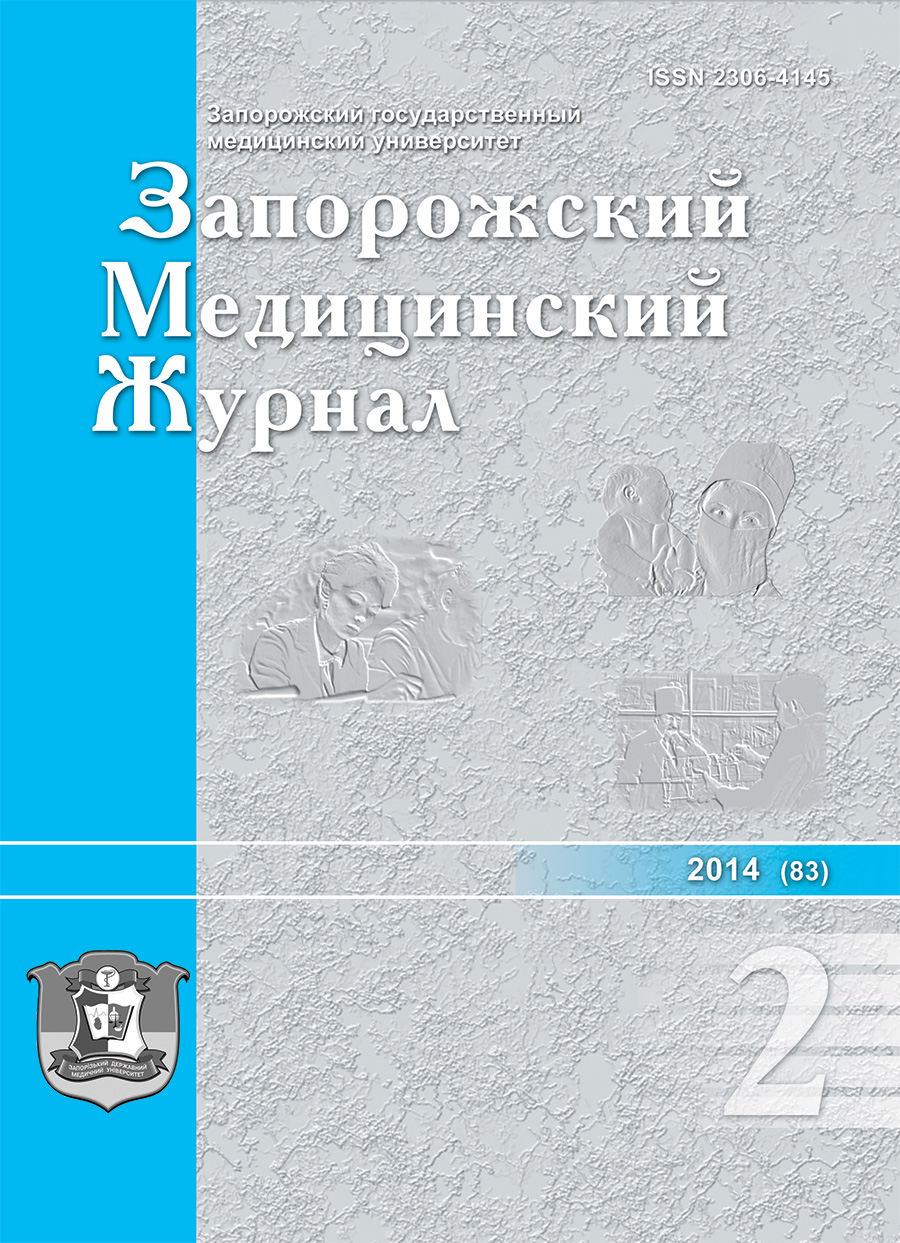Clinical efficacy of gliclazide with modified release after myocardial infarction in patients with concomitant type 2 diabetes
DOI:
https://doi.org/10.14739/2310-1210.2014.2.25230Keywords:
Q-myocardial infarction, type 2 diabetes, Gliclazide, clinical course, glucometabolic control, humoral parametersAbstract
Introduction. At present, the most clinically efficiency on reducing the risk of cardiovascular complications in patients with type 2 diabetes showed by intense step by step hypoglycemia strategy of therapy with sulfonylureas - gliclazide modified release. However, there is an insufficient number of works that would specifically study the effectiveness of this drug in patients with Q- myocardial infarction with concomitant type 2diabetes mellitus in the acute stage of the disease after 6 and 12 months of therapy.
Objective: to study the effectiveness of gliclazide modified release in patients with Q- myocardial infarction with concomitant type 2diabetes mellitus by its effect on the clinical course of the disease, glucometabolic control and humoral parameters during 12 months of observation.
Materials and Methods: we examined 99 patients with Q- myocardial infarction with metabolic syndrome and concomitant type 2diabetes mellitus, 52 men (52.53%) and 47 women (47.47%), average age (62,9 ± 2, 05) years. The main group consisted of 28 patients who in addition to basic therapy were prescribed gliclazide modified release in a dose of 30-60 mg;71 patients were in the comparison group, treated with glibenclamide. Immunoenzyme method was carried out to determine the level of IL-1α, IL-6, TNF-α (Diaclone, France), endothelin-1 (Biomedica, Austria), insulin-like growth factor, insulin, C-peptide, leptin, C-reactive protein (DAI, USA), tissue plasminogen activator inhibitor-1 (Biopool, USA).The concentration of glucose, glycosylated hemoglobin investigated using a set of reagents BIOLATEST company PLIVA-Lachema. The data are processed by methods of variation statistics using application package «Statistica 6.0» by standard requirements.
Results: Gliclazide modified release inclusion in the basic treatment of patients with type 2 diabetes after myocardial infarction associated with reduced mortality - in 2.29-fold (p <0.05), frequency of development of non-fatal myocardial infarction at 14.74% (p <0.05), likely decrease in blood glucose, glycosylated hemoglobin, insulin and leptin during 12 months of therapy. Side effects in applying gliclazide was not observed. In patients treated with gliclazide modified release after 6 months of treatment compared with glibenclamide group was significantly lower concentration of interleukin-6 in 42.51% (p <0.05), tumor necrosis factor-α to 18.54% (p <0.05), endothelin-1 to 52.80% (p <0.01), tissue plasminogen activator inhibitor-1 to 67.12% (p <0.05);after 12 months - interleukin-6 at 58.02% (p <0.01), tumor necrosis factor-α to 17.54% (p <0.05), endothelin-1 to 63.98% (p <0 , 01), tissue plasminogen activator inhibitor-1 to 80.74% (p <0.05), indicating that the benefits of the drug by the effects on endothelial dysfunction and inflammatory changes.
Conclusions: gliclazide modified release long-term use in patients with myocardial infarction with type 2 diabetes mellitus has a positive effect on the clinical course of the disease, which is manifested in a decrease in frequency of development non-fatal myocardial infarction and mortality 2.29 times during the 12 months of observation, provides effective glucometabolic control and optimum portability.In patients with myocardial infarction with type 2 diabetes mellitus gliclazide modified release reduces the severity of hyperinsulinemia, hiperleptynemiyi and signs of endothelial dysfunction, prevents thrombus formation, reduces the concentration of proinflammatory cytokines during 12 months of therapy.
References
Kaminski A.V. Pathogenesis and treatment of type 2 diabetes mellitus: dilemmas, delusions and consensuses. Mezhdunarodny endokrinologicheskiy zhurnal 201; 7(39): 25-35.
Pekareva E.V. Advantages of using gliclazide MR in patients with type 2 diabetes. Problemy endokrynologii 2012; 2: 58-61.
Dedov I.I., Shestakova M.V. Sakharnyi diabet: diagnostika, lechenie, profilaktyka [Diabetes mellitus: diagnosis, treatment, prevention]. Moscow, Medytsynskoe informatsionnoe agenstvo, 2011. 808 p.
Ilchenko O.M. Treatment of type 2 diabetes mellitus. A brief summary of systematic reviews of Cochrane collaboration. Ukrainskiy medychny chasopys 2007; 2(58): 54-59.
Mitchenko O.I. On behalf of the Working Group of the metabolic syndrome, prediabetes and cardiovascular diseases Ukrainian Heart Association and Ukrainian Association of Endocrinologists. Ukrainskiy medychny chasopys 2007; 2(58): 4-13.
Updated recommendations of the American Diabetes Association for diabetes management. Praktychna angiologiya 2010; 2: 5-11.
D. M. Nathan, J. B. Buse, M. B. Davidson [et al.] Medical management of hyperglycemia in type 2 diabetes: a consensus algorithm for the initiation and abjustment of therapy. A consensus statement of the American Diabetes Associacion and the European Association for Study of Diabetes Diabetologia 2009; 52: 17–30.
Diagnosis and treatment of metabolic syndrome, diabetes and cardiovascular diseases: recommendations of Ukrainian Heart Association and Ukrainian Association of Endocrinologists. Kiev, 2008. 29 p.
American Diabetes Association. Standards of medical care in diabetes. Diabetes Care 2013; 36 (Suppl. 1):11-66.
Mankovsky B.M. Diabetes mellitus as risk factor cardiovascular diseases in women. Nova medytsyna 2005; 1: 38-39.
Downloads
How to Cite
Issue
Section
License
Authors who publish with this journal agree to the following terms:
Authors retain copyright and grant the journal right of first publication with the work simultaneously licensed under a Creative Commons Attribution License that allows others to share the work with an acknowledgement of the work's authorship and initial publication in this journal. 
Authors are able to enter into separate, additional contractual arrangements for the non-exclusive distribution of the journal's published version of the work (e.g., post it to an institutional repository or publish it in a book), with an acknowledgement of its initial publication in this journal.
Authors are permitted and encouraged to post their work online (e.g., in institutional repositories or on their website) prior to and during the submission process, as it can lead to productive exchanges, as well as earlier and greater citation of published work (See The Effect of Open Access)





